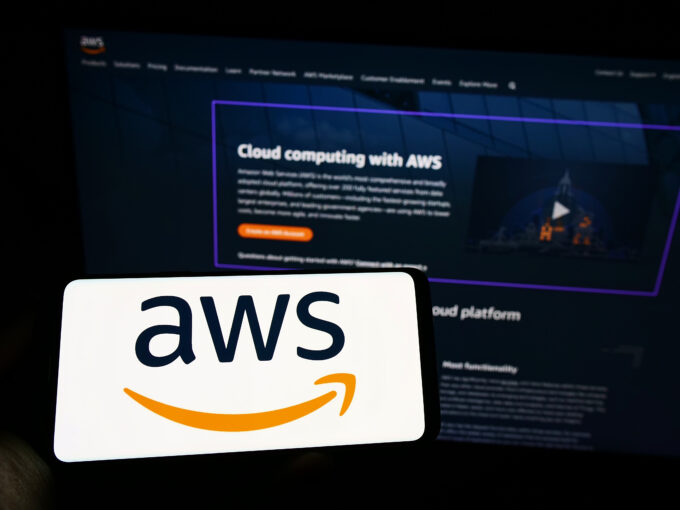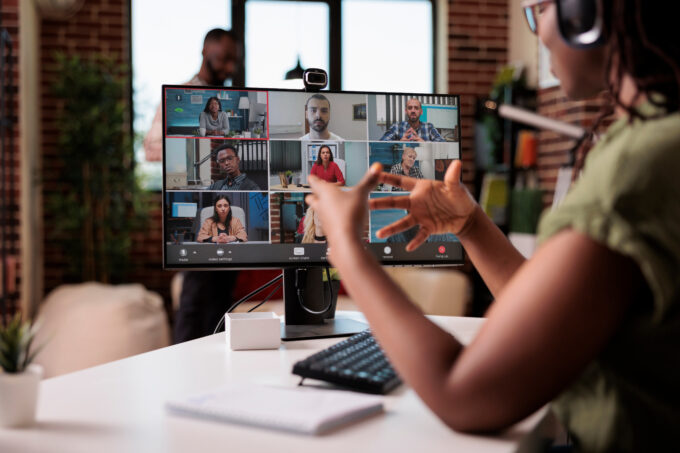
The theory of equality will change the workplace forever
In the early 1900s, Einstein’s Theory of Relativity, E = mc², reshaped our understanding of the universe and changed the world as we knew it. The Theory of Equality™, E = FQ²,...
October 6, 2023 in The Female Quotient
Armed with sustainable missions and entrepreneurial nous, women in tech tend to get the job they apply for more often than men: so how can we bolster this potent little minority?...

When it comes to the leaders most driving innovation in global cities, women in tech are among those groups making the greatest impact. But here’s the sticking point: females in the tech sector account for just 25% of the jobs and 11% of the executive roles in this arena. It’s also the case that far fewer women than men possess specialist digital skills.
“While it’s great for more women to enter the workforce, the transformation comes by teaching women to lead. Patriarchy is real. But how do you get women to be smart about it? Build platforms focusing on making tech accessible, and women can change the world,” says Rajashri Sai, Founder of Impactree.AI.
Hers is a tech company specializing in social impact which has developed a unique sustainability intelligence platform able to automate the entire data value chain for social development.
Speaking of the situation in her native India, Sai says: “When you look at tech as a pyramid, at the top there are companies working towards deep tech and AI models but there is a middle India and it’s focusing a lot on tech enablement. This is where women are leading; 73% of women entrepreneurs start something with a social or sustainable mission.”
And it’s this type of work that is making dents in helping to achieve social and economic goals on a national and global level.
There are reasons to get women to the top in tech beyond seeking gender parity. “It makes business sense to ensure we have diverse representation; a cross-section of people adds value,” says Amit Mehta, Head of Training & Certification at Amazon Web Services.
“At Amazon India we need about 2.2 million cloud engineers by 2025 and the supply side says we can provide only 1.4 million. Where do we get the talent pool from? One dimension we looked at was expanding it. A lot of women take sabbaticals from work, and others still have wanted to come back since COVID. Many of them have sought to move from hospitality – which took a beating – to tech, and the work India has done on digitalization is forcing them to look at tech in a big away. But they don’t have the background.”
With all this in mind, Amazon started a program in which they take the learner on an intensive 12-week program in Cloud, IT, software, and certification. Some of these students have battled abuse, while others ended up teaching cohorts.
“We are in a perfect storm; the India digital stack has driven digitization and is showing the way for the world. There is a demand-supply gap for the first time and here we have a talent pool. In the Indian IT sector, about 36% of women participate in the workforce; higher than in other sectors,” says Mehta.
Various Google initiatives help women professionals pivot in their careers to build new ones in tech, says Roma Datta Chobey, Managing Director of Digital First Businesses at Google India. Some women may be returning to work after a break and many initiatives are driven by partnerships facilitating a multi-pronged approach of mentorship, coaching and leadership.
“In March this year, our first cohort of 20 women founders graduated. It makes a big difference to the women on the floor if you have female representation at the top,” says Chobey.

“In 2015 when I joined Google, one out of every ten internet users was a woman; today that ratio is about four out of every 10. The moment women and girls have equal access to information is when their journey starts; they want to use it to create livelihoods.”
This philosophy led to the ‘Women Will’ initiative around business literacy, helping women use tech for small entrepreneurship.
“That really picked up during COVID,” says Chobey. “The more access women have to information, the more positive the impact on their entire family.”
Statistics from LinkedIn reflect how women tend to apply less than men for equivalent jobs. The platform – used heavily for hiring – looked at how different genders apply to open jobs.
“Men and women opened jobs equally (with the same rate) but when it came to apply rate, women applied 20% less than men,” explains Ashutosh Gupta, Country Manager at LinkedIn India.
Why? Let’s say there are 10 job requirements; men apply even if they meet just six. Women self-screen themselves and will only apply if they have nine or 10 of them.
It seems that while women are good at building relationships, they aren’t so skilled at leveraging them. But wait: while women applied less than men, they still got more jobs proportionally speaking.
“This shows that if more women applied at the top, inequality would likely decrease,” says Gupta.
And how can we help make this more likely?
Essentially, hire for the skills needed for the job. It makes the pool bigger and multiplies opportunities to get women into the workforce. Forget “X” school, or “Y” company; if you haven’t even talked about skills, what’s the point in hiring in the first place, Gupta asks?
“Success is not going to come on a plate,” says Honey Goyal, Lead of Knowledge Management at KPMG in India.
“At the time of hiring, we educate our staff so they don’t have biases against women or any other criteria. During her career, we offer the possibility of change. We give support during maternity leave; coach women in order to understand their challenges; and create roles that understand the phase women may be in, in terms of their life and career.”
She says the firm also celebrates women’s work together with her family, as a sign of recognition of the positive knock-on effect on them all.

Meanwhile, Nitendra Rajput – Senior Vice President at Mastercard in India, and Head of the AI Garage center in India which works on solving machine learning problems for the financial world – says his firm tries to identify how to remove resistances for women. This boils down to creating an environment that is safer and that considers “you as you and not as someone else; it makes business sense to have employees who are stronger.”
He says the work ahead is not as much about training and empowering as it is about undoing the resistance bands women have had to wear which, whilst curtailing them in the short term, has actually made them more powerful in the long run.
This article is based on a panel discussion from The Female Quotient’s (FQ) Equality Lounge sessions at the G20 Summit in New Delhi. IMD is an academic partner of The Female Quotient, which joins forces with companies and leaders to curate experiences, thought leadership, and solutions designed to achieve gender equality in the workplace and beyond.

Founder & CEO, Aspire For Her

Senior Vice President, Mastercard

Country Manager, LinkedIn India

Managing Director - Digital First Businesses, Google India

Head, Training & Certification, Amazon Web Services

Founder, Impactree.AI

Lead, Knowledge Management, KPMG in India

January 21, 2025 • by Shelley Zalis in The Female Quotient
In the early 1900s, Einstein’s Theory of Relativity, E = mc², reshaped our understanding of the universe and changed the world as we knew it. The Theory of Equality™, E = FQ²,...

June 12, 2024 • by Shelley Zalis in The Female Quotient
Women often step back from their careers because caring responsibilities usually fall on them by default, thanks to outdated societal norms....

March 22, 2024 • by Shelley Zalis in The Female Quotient
Educate yourself, keep up-to-date, and share your knowledge to exploit the potential that AI has to offer....
 Audio available
Audio available
December 8, 2023 in The Female Quotient
Climate finance is the hottest topic on the table when it comes to doing something tangible about climate change. We urgently need to propagate the “hows” around investing in positive values....
Explore first person business intelligence from top minds curated for a global executive audience